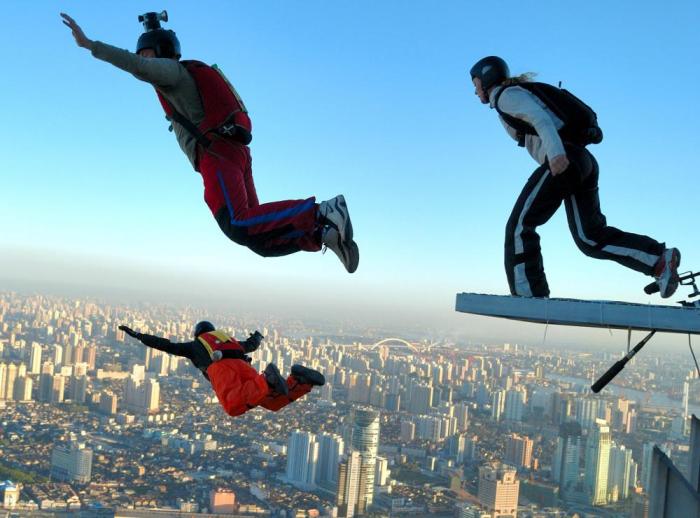Extreme tourism definition – Extreme tourism, a captivating realm where adrenaline junkies seek extraordinary experiences that push the boundaries of human endurance and exhilaration, is a phenomenon that has captivated the imaginations of thrill-seekers worldwide. From scaling towering mountains to diving into uncharted depths, extreme tourism offers a unique blend of adventure, risk, and personal growth that appeals to those who crave the ultimate rush.
This exhilarating pursuit encompasses a wide range of activities, each designed to test the limits of physical and mental capabilities. Whether it’s conquering icy peaks, navigating treacherous rapids, or soaring through the skies, extreme tourism offers a tantalizing mix of excitement, challenge, and self-discovery.
Definition of Extreme Tourism
Extreme tourism is a type of tourism involving activities that are considered dangerous or risky. These activities often take place in remote or challenging environments and may require specialized skills or equipment.
Extreme tourism activities can include:
- Adventure sports like bungee jumping, skydiving, and white-water rafting
- Wildlife encounters with animals like sharks, lions, and gorillas
- Cultural immersion in remote or indigenous communities
People engage in extreme tourism for various reasons, including the pursuit of adventure, adrenaline, and personal growth. However, these activities also come with significant safety risks, including injury, illness, and even death.
Ethical concerns surrounding extreme tourism include the potential exploitation of vulnerable communities, the impact on wildlife, and the environmental consequences of these activities.
Types of Extreme Tourism
Extreme tourism encompasses a wide range of activities that push the limits of human endurance and challenge conventional boundaries. From scaling sheer rock faces to diving into icy depths, these types of tourism offer a unique blend of adrenaline, adventure, and personal growth.
Each type of extreme tourism has its own distinct characteristics and appeal, catering to individuals with varying levels of experience, fitness, and risk tolerance.
Adventure Travel
Adventure travel focuses on exploring remote and challenging destinations, often involving physical activity and cultural immersion. Activities within this category include:
- Trekking through rugged mountains or dense jungles
- White-water rafting on turbulent rivers
- Exploring ancient ruins and hidden caves
Extreme Sports
Extreme sports involve pushing the limits of human physical ability, often in high-risk environments. Some popular extreme sports include:
- Skydiving from thousands of feet above the ground
- Bungee jumping off towering structures
- Rock climbing on sheer rock faces
Wilderness Exploration
Wilderness exploration involves venturing into remote and untamed environments, often with the goal of scientific discovery or personal growth. Activities within this category include:
- Exploring uncharted territories and studying wildlife
- Camping in extreme conditions and facing the challenges of nature
- Conducting scientific research in remote ecosystems
Cultural Immersion
Cultural immersion extreme tourism involves experiencing foreign cultures and traditions in a deep and immersive way. This can include:
- Living with indigenous communities and learning their customs
- Participating in traditional ceremonies and rituals
- Exploring off-the-beaten-path destinations and interacting with locals
Risks and Safety Considerations
Extreme tourism activities inherently involve a higher level of risk compared to traditional forms of tourism. These risks can range from minor injuries to severe accidents or even death. Understanding these risks and taking appropriate safety measures is crucial for a safe and enjoyable experience.
To mitigate these risks, extreme tourism operators implement various safety measures. These measures may include providing participants with specialized training, equipment, and safety protocols. Guides with expertise in the specific activity are typically present to ensure proper execution and respond to emergencies.
Risk Assessment and Participant Responsibility
Before engaging in any extreme tourism activity, it’s essential to conduct a thorough risk assessment. This involves evaluating your physical fitness, skill level, and experience in relation to the demands of the activity. It’s also important to consider any underlying health conditions or medications that may affect your participation.
Participants must take personal responsibility for their safety by following instructions, wearing appropriate gear, and adhering to safety protocols. Being aware of the risks and taking necessary precautions can significantly reduce the likelihood of accidents.
Emergency Preparedness and Response
Extreme tourism operators typically have emergency response plans in place to handle unforeseen situations. These plans involve communication systems, evacuation procedures, and access to medical assistance. Participants should familiarize themselves with these plans and know how to contact help in case of an emergency.
Extreme tourism, a heart-pounding adventure for adrenaline junkies, pushes the limits of human endurance. But if you’re seeking a milder thrill, consider great family adventure vacations. These experiences offer a blend of excitement and accessibility, allowing families to create unforgettable memories without sacrificing safety.
Yet, even within these bounds, the essence of extreme tourism remains—a yearning for the unknown, a thirst for the extraordinary.
By understanding the risks, taking appropriate safety measures, and being responsible participants, individuals can minimize the risks associated with extreme tourism and enjoy these activities safely.
Extreme tourism is all about pushing the limits and getting your adrenaline fix. But if you’re looking for a more civilized way to get your thrills, check out luxury family activity holidays europe. These trips are designed for families who want to experience the best of Europe without sacrificing comfort or safety.
You’ll still get to see amazing sights and have plenty of adventures, but you’ll do it in style. And when you’re not out exploring, you’ll be able to relax in luxurious accommodations and enjoy delicious food.
Environmental Impact
Extreme tourism activities can have a significant impact on the environment. Off-road driving, for instance, can damage vegetation and disturb wildlife. Trekking and climbing can lead to erosion and pollution. Scuba diving and snorkeling can harm coral reefs and marine life.
To minimize the impact on natural environments, extreme tourism operators are increasingly adopting sustainable practices. These practices include using biodegradable materials, recycling waste, and educating tourists about the importance of protecting the environment.
Sustainable Practices in Extreme Tourism
- Using biodegradable materials: Extreme tourism operators can use biodegradable materials, such as bamboo utensils and compostable packaging, to reduce their environmental impact.
- Recycling waste: Extreme tourism operators can recycle waste, such as plastic bottles and aluminum cans, to reduce the amount of waste that goes to landfills.
- Educating tourists about the importance of protecting the environment: Extreme tourism operators can educate tourists about the importance of protecting the environment and how they can help to minimize their impact.
Ethical Considerations
Extreme tourism raises a number of ethical concerns, particularly in relation to the exploitation of indigenous cultures and communities, as well as issues of consent and informed participation.
The influx of tourists into remote and often fragile environments can have a significant impact on the local way of life. Indigenous communities may be pressured to adapt their traditions and practices to meet the demands of tourists, leading to a loss of cultural authenticity.
Extreme tourism, where thrill-seekers push their limits in perilous adventures, might not be everyone’s cup of tea. But for families seeking a blend of adventure and relaxation, family world holidays offer a perfect balance. While not as extreme as bungee jumping or shark diving, these curated experiences combine exploration with cultural immersion, allowing families to create unforgettable memories without compromising safety or comfort.
Yet, even in these family-friendly adventures, a touch of extreme tourism’s adrenaline rush lingers, ensuring an unforgettable experience for all.
Exploitation of Indigenous Cultures and Communities
In some cases, indigenous communities may be exploited by tour operators who seek to profit from their unique cultural heritage. This can include charging exorbitant fees for access to sacred sites or rituals, or using images of indigenous people in marketing materials without their consent.
Consent and Informed Participation
It is important to ensure that indigenous communities are fully informed about the potential impacts of extreme tourism and that they give their free and informed consent to participate. This includes providing information about the risks and benefits of tourism, as well as the potential impact on their environment and culture.
Legal and Regulatory Framework
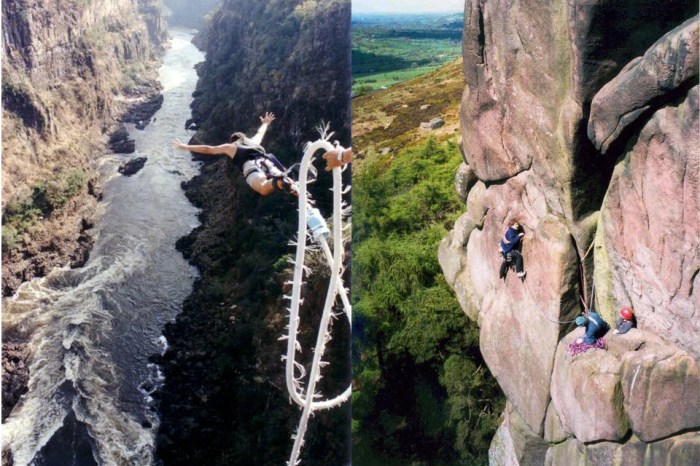
Extreme tourism operates within a complex legal and regulatory framework that varies across jurisdictions. International regulations, national laws, and local ordinances govern various aspects of the industry.
Insurance and Liability
Insurance plays a crucial role in extreme tourism. Operators must carry adequate liability insurance to cover potential accidents, injuries, or property damage. Participants should also consider purchasing personal travel insurance to protect themselves against unforeseen circumstances. Insurance coverage extends to operators, participants, and third parties who may be affected by extreme tourism activities.
Safety Standards and Certifications
International organizations and national accreditation bodies establish safety standards and certifications for extreme tourism operators. These standards cover equipment, training, and operational procedures to minimize risks and ensure participant safety. Compliance with these standards demonstrates an operator’s commitment to safety and can influence insurance premiums.
Waivers and Informed Consent
Waivers are legal documents that participants sign before engaging in extreme tourism activities. They acknowledge the inherent risks and release operators from liability in the event of an accident. Informed consent requires operators to provide participants with comprehensive information about the risks and potential consequences of the activity before they sign a waiver.
Guiding and Supervision
Extreme tourism activities often involve skilled guides and supervisors. These professionals are responsible for ensuring participant safety, providing instruction, and managing risks. Legal and ethical considerations guide their conduct, including the duty of care to participants and the responsibility to act responsibly and within the limits of their expertise.
Legal Cases and Regulatory Actions
Legal cases and regulatory actions related to extreme tourism illustrate the practical application of the legal and regulatory framework. These cases highlight the importance of compliance, liability, and the need for robust safety measures in the industry. They serve as precedents and shape the legal landscape of extreme tourism.
Marketing and Promotion
Extreme tourism is a niche market that requires specialized marketing strategies to reach its target audience. Traditional channels like print advertising and television commercials are still used, but digital channels have become increasingly important.
Target Audience
The target audience for extreme tourism is typically adventure-seeking individuals with a high level of physical fitness and a strong desire for adrenaline-pumping experiences. They are often younger, affluent, and well-educated.
Social Media and Online Platforms
Social media and online platforms play a crucial role in promoting extreme tourism. Travel influencers and adventure bloggers share their experiences with extreme activities, which can inspire and motivate potential tourists. User-generated content, such as photos and videos, can also be used to showcase the thrill and excitement of extreme tourism.
Word-of-Mouth and Customer Reviews
Word-of-mouth and customer reviews are powerful marketing tools for extreme tourism. Positive experiences shared by friends and family can influence travel decisions, while negative reviews can deter potential tourists.
Ethical Considerations
It is important to market extreme tourism in a responsible and ethical manner. Marketers should avoid sensationalizing the risks and dangers of extreme activities, and they should promote safety and sustainability.
Case Studies
* Red Bull Stratos: The Red Bull Stratos project, which saw Felix Baumgartner jump from a high-altitude balloon, was a highly successful marketing campaign for Red Bull. The event generated global media coverage and helped to raise awareness of the brand.
* GoPro: GoPro is a leading manufacturer of action cameras that are popular among extreme sports enthusiasts. The company’s marketing campaigns often feature user-generated content that showcases the thrilling and adrenaline-pumping experiences that can be captured with GoPro cameras.
Impact of Technology
Technology is having a major impact on the marketing of extreme tourism. Virtual reality (VR) and augmented reality (AR) are being used to create immersive experiences that allow potential tourists to get a taste of extreme activities before they commit to booking a trip. Wearable devices are also being used to track and share data about extreme activities, which can help to promote safety and improve the overall experience.
Emerging Trends
* Experiential marketing: Extreme tourism providers are increasingly offering experiential marketing campaigns that allow potential tourists to try out extreme activities in a safe and controlled environment.
* Personalized marketing: Extreme tourism marketers are using data and analytics to personalize marketing campaigns and target specific segments of the market.
* Sustainable tourism: Extreme tourism providers are becoming more aware of the need to promote sustainable tourism practices and minimize their environmental impact.
Economic Impact
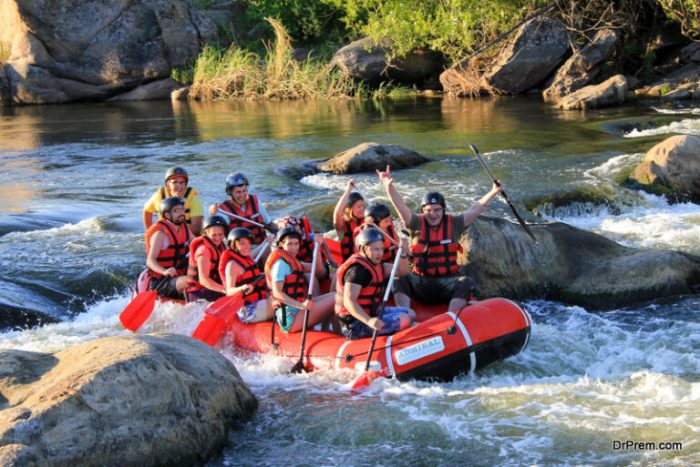
Extreme tourism has a significant economic impact on local communities, creating job opportunities and revenue generation. It attracts tourists seeking unique and thrilling experiences, contributing to local businesses and stimulating economic growth.
Job Creation
Extreme tourism activities require specialized skills and expertise, leading to job creation for local guides, instructors, and support staff. These jobs provide income and employment opportunities, especially in remote or underdeveloped areas.
Revenue Generation
Tourists participating in extreme tourism activities spend money on accommodations, transportation, equipment rentals, and other services. This revenue directly benefits local businesses, including hotels, restaurants, transportation providers, and adventure tour operators.
Tourism Infrastructure
The development of extreme tourism often requires the establishment of supporting infrastructure, such as access roads, safety equipment, and specialized facilities. These investments can improve the overall infrastructure and accessibility of the area, benefiting both tourists and local residents.
Cultural and Social Impact
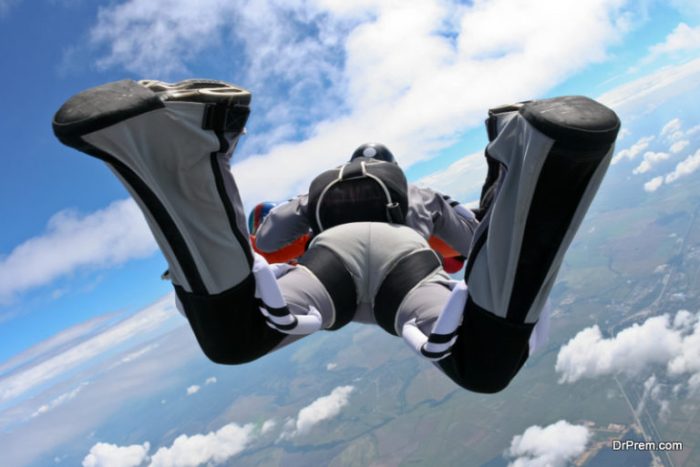
Extreme tourism can have a significant impact on the culture and society of host communities. On the positive side, it can promote cultural exchange and understanding between tourists and locals. Tourists can learn about different ways of life and gain a new appreciation for other cultures. Locals can benefit from the economic benefits of tourism and gain a new sense of pride in their heritage.
Extreme tourism can also help to preserve cultural traditions. For example, in Nepal, the growth of trekking tourism has helped to revive traditional Sherpa culture. However, extreme tourism can also have negative impacts on culture and society. For example, it can lead to the commodification of culture, the displacement of local residents, and the erosion of traditional values.
– Technological Advancements
Extreme tourism has been revolutionized by technological advancements that enhance safety, navigation, and documentation. These innovations include drones, GPS tracking, satellite communication, and wearable technology.
– Drones
Drones provide aerial perspectives for photography and videography, capturing breathtaking shots of extreme environments. They assist in search and rescue operations, delivering supplies to remote areas, and monitoring wildlife.
– GPS Tracking
GPS tracking devices ensure accurate navigation, allowing participants to explore challenging terrains safely. They provide real-time location updates, enabling rescuers to locate individuals in emergencies.
– Satellite Communication
Satellite communication enables communication in remote areas where cellular networks are unavailable. It allows participants to stay connected with support teams, receive weather updates, and access emergency services.
– Wearable Technology
Wearable technology, such as smartwatches and fitness trackers, monitors vital signs and performance. It provides real-time data on heart rate, altitude, and distance traveled, helping participants optimize their performance and stay within safe limits.
– Virtual and Augmented Reality
Virtual reality (VR) simulations provide immersive training experiences, preparing participants for extreme conditions. Augmented reality (AR) overlays enhance navigation, providing real-time information about the environment.
– Ethical Implications
While technology enhances extreme tourism, it also raises ethical concerns. Privacy concerns arise from the use of drones and wearable devices. Environmental impact must be considered, as drones and other equipment can disturb wildlife and fragile ecosystems.
– Accessibility and Inclusivity
Technology can promote accessibility and inclusivity in extreme tourism. GPS tracking and wearable devices assist individuals with disabilities or limited experience in navigating challenging environments. VR simulations enable those unable to participate physically to experience extreme activities virtually.
Future Trends
Extreme tourism is rapidly evolving, with new trends emerging that are shaping the future of this thrilling industry.
One notable trend is the growth of niche markets. Adventure-seeking seniors and families with young children are increasingly seeking out extreme experiences that cater to their specific needs and interests. For example, companies are offering guided tours that combine adventure activities with cultural immersion and educational opportunities, making extreme tourism more accessible to a wider range of travelers.
Another significant trend is the increased focus on environmental sustainability. Extreme tourism operators are becoming more aware of the environmental impact of their activities and are implementing sustainable practices to minimize their footprint. This includes using eco-friendly equipment, promoting responsible waste management, and partnering with local conservation organizations.
Case Studies
Extreme tourism ventures can be highly successful or face significant challenges. Analyzing case studies of both successful and unsuccessful ventures provides valuable insights into the factors that contribute to their outcomes.
Case studies of successful extreme tourism ventures highlight the importance of thorough planning, risk management, and marketing. These ventures often involve experienced operators who prioritize safety and provide comprehensive training and support to participants. They also effectively promote their offerings to target audiences and establish a strong brand reputation.
Unsuccessful Case Studies
Unsuccessful extreme tourism ventures, on the other hand, often face challenges such as inadequate risk assessment, poor safety protocols, and ineffective marketing. They may lack experienced operators, proper training, and support systems, leading to accidents and negative experiences. Additionally, they may fail to effectively reach their target audience or differentiate themselves from competitors.
Lessons Learned
By analyzing case studies of both successful and unsuccessful extreme tourism ventures, several lessons can be learned:
- Prioritize safety and risk management through thorough planning and experienced operators.
- Provide comprehensive training and support to participants.
- Develop effective marketing strategies to reach target audiences.
- Establish a strong brand reputation based on safety, quality, and customer satisfaction.
- Continuously evaluate and improve operations to address changing needs and challenges.
Comparison to Other Forms of Tourism
Extreme tourism stands apart from other forms of tourism due to its inherent physical and mental demands, elevated risk factors, and potential environmental impact. While it shares certain characteristics with adventure tourism, wildlife tourism, cultural tourism, and ecotourism, it distinguishes itself through its emphasis on extreme experiences and the pursuit of adrenaline-inducing activities.
Adventure Tourism
Extreme tourism and adventure tourism both involve engaging in activities that challenge physical abilities and test limits. However, extreme tourism often involves a higher level of risk and more extreme conditions, such as mountaineering in treacherous terrain or deep-sea diving in remote locations.
Wildlife Tourism
Wildlife tourism focuses on observing and interacting with animals in their natural habitats. While some extreme tourism activities may involve wildlife encounters, such as shark cage diving or polar bear safaris, the primary emphasis is on the extreme experience rather than wildlife conservation.
Cultural Tourism
Cultural tourism aims to immerse travelers in the customs, traditions, and heritage of a particular region. Extreme tourism, on the other hand, prioritizes adrenaline-pumping activities and often involves limited cultural engagement.
Ecotourism
Ecotourism emphasizes responsible travel that minimizes environmental impact and supports local communities. Extreme tourism, while it may occasionally incorporate elements of ecotourism, tends to focus more on the thrill-seeking aspect than on environmental preservation.
Adventure Activities
Extreme tourism activities, such as rock climbing, whitewater rafting, skydiving, and bungee jumping, share similarities with other adventure activities. However, extreme tourism often pushes the boundaries of these activities by seeking out more challenging conditions or incorporating additional elements of risk.
Motivations
Extreme tourists are driven by a desire for intense experiences, a sense of accomplishment, and a need to push their physical and mental limits. This differs from participants in other forms of tourism, who may be motivated by relaxation, cultural enrichment, or a connection with nature.
Ethical Implications
Extreme tourism raises ethical concerns related to risk management, environmental impact, and the exploitation of local communities. These ethical implications are distinct from those associated with other forms of tourism, which may primarily focus on cultural sensitivity or responsible resource management.
– Safety
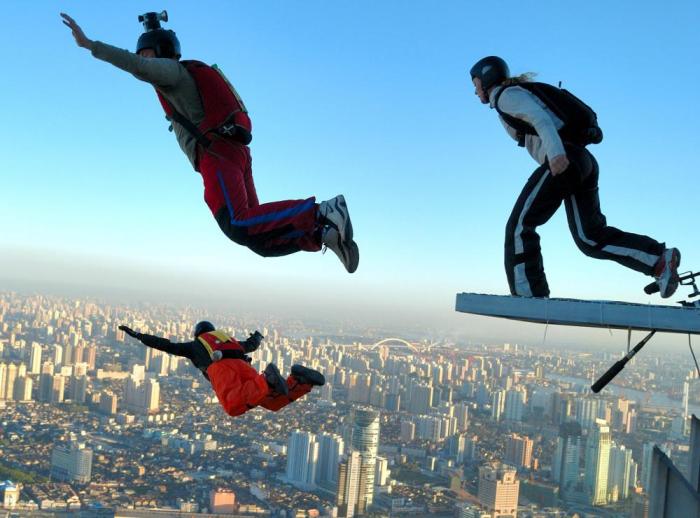
Extreme tourism involves inherent risks, making safety a paramount concern. To ensure a safe and enjoyable experience, it is crucial to implement comprehensive risk assessments and safety protocols. Guides should be highly trained and certified in relevant activities, ensuring they possess the necessary skills and knowledge to manage potential hazards. Additionally, participants must receive thorough safety briefings and equipment checks before embarking on any activity.
– Risk Assessments and Safety Protocols
Conducting thorough risk assessments is essential to identify potential hazards and develop appropriate mitigation strategies. These assessments should consider factors such as the activity’s inherent risks, environmental conditions, and the participants’ physical capabilities. Based on the risk assessment, safety protocols should be established to minimize the likelihood and severity of accidents.
– Guide Training and Certification
Guides play a vital role in ensuring the safety of participants in extreme tourism activities. They should be highly trained and certified in the specific activities they lead. This training should include technical skills, emergency response procedures, and wilderness first aid. Guides must also be familiar with the local environment and potential hazards.
– Participant Briefings and Equipment Checks
Before engaging in any extreme tourism activity, participants must receive a comprehensive safety briefing. This briefing should cover the risks involved, safety procedures, and emergency protocols. Additionally, equipment checks should be conducted to ensure that all gear is in good working order and fits properly.
Recommendations for Extreme Tourism Participants: Extreme Tourism Definition
Extreme tourism is an exhilarating experience that demands thorough preparation, fitness, and risk assessment. Embarking on such adventures requires a proactive approach to safety and well-being.
Preparation and Fitness, Extreme tourism definition
- Research thoroughly: Understand the activity, destination, and operator’s reputation.
- Train adequately: Ensure physical fitness aligns with the demands of the experience.
- Consult healthcare professionals: Seek advice on medical considerations and vaccinations.
Risk Assessment and Operator Selection
- Evaluate risks: Acknowledge and assess potential hazards associated with the activity.
- Choose reputable operators: Opt for companies with proven safety records, certifications, and positive reviews.
- Follow safety guidelines: Adhere strictly to instructions and guidelines provided by the operator.
Final Review
As the sun sets on this exploration of extreme tourism, it’s evident that this captivating realm is not for the faint of heart. It demands a thirst for adventure, a willingness to embrace risk, and an unyielding determination to push beyond the ordinary. For those who dare to venture into this exhilarating world, the rewards are immeasurable: a profound sense of accomplishment, an intimate connection with nature, and memories that will last a lifetime.
Quick FAQs
What is the definition of extreme tourism?
Extreme tourism refers to activities that involve a high level of risk and physical exertion, typically taking place in remote or challenging environments.
What are some examples of extreme tourism activities?
Examples include mountaineering, white-water rafting, skydiving, bungee jumping, and deep-sea diving.
What are the motivations for engaging in extreme tourism?
Participants seek a variety of motivations, including the pursuit of adrenaline, a sense of accomplishment, personal growth, and a connection with nature.
